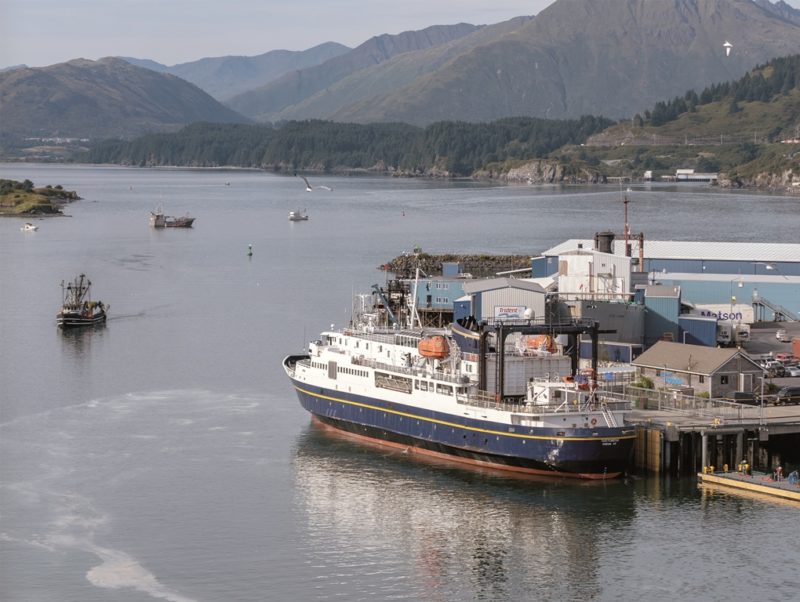
Although not the largest vessels of the Alaskan Marine Highway System, the motor ships Tustumena and Kennicott are probably the most interesting for a variety of reasons, not least being the fact that the two of them are the only ships in the fleet which are fully licensed with passenger certificates for unlimited ocean voyaging. When one considers the scope of the AMHS operations, covering a navigable area of over 3,500 nautical miles, from the far west of the Aleutian Islands chain, all the way round the gulf of Alaska and ultimately down to the Washington State port of Bellingham, just south of Vancouver Island, one can begin to appreciate the need for such vessels.
Scheduled ferry services in Alaskan waters were first born in 1949, with the establishment of the Chilcoot Motor-Ship Line and their one vessel operation. They became bankrupt in 1951, and the Territory of Alaska took over the company. When the State of Alaska came into being in 1959, one of the first acts was to rapidly expand ferry operations in the south and southeast coastal region, and to have such operations and assets owned, funded and operated by a state corporation, which became known as the ‘Alaska Marine Highway System’. Nowadays, because of the distinctive deep blue colour of all the ferries hulls, they are also affectionately known as ‘The Blue Canoes’
The Tustumena, built in 1963/64 was deemed a necessary addition to the fleet, in order to fully link and integrate the entirety of the Aleutian Islands into what had only recently become the State of Alaska. She was designed from the start to be a fully ocean going vessel, complete with a side loading elevator with turntable, in order to serve the remote island ports, some of which to this day have no link span facilities. The remoteness of this island chain also dictated that full passenger facilities be made available, such as en-suite cabins, restaurants and lounges, since passengers could be on board for many days at a time.
Having been in service for over 55 years, she is clearly an Aleutian icon that has featured large in the lives of Alaskans and in the hearts and minds of the many thousands of tourists who have ventured out along its route. In the summertime, passenger demand far outstrips the supply of passenger cabins, and so whole families can be seen camping out in tents along the outside passenger decks, said tents being secured onto the steel or wood decking with copious amounts of sturdy waterproof tape.
As has been proved in other remote island archipelagos, a key driver in arresting depopulation is the provision of a regular connection with the outside world. The AMHS and the Tustumena have done just that and they have also played a role in the growth of wild fish exporting and farming in the Aleutians, and gives Islanders a predictable method of receiving building materials and general supplies, helping enormously in giving people the confidence to stay or come to and settle in such a remote area.
But unsurprisingly, as the decades have passed, Tustumena has become more and more expensive to operate, and struggles, albeit successfully, to follow the strict safety compliance requirements set by the United States Marine Coastguard
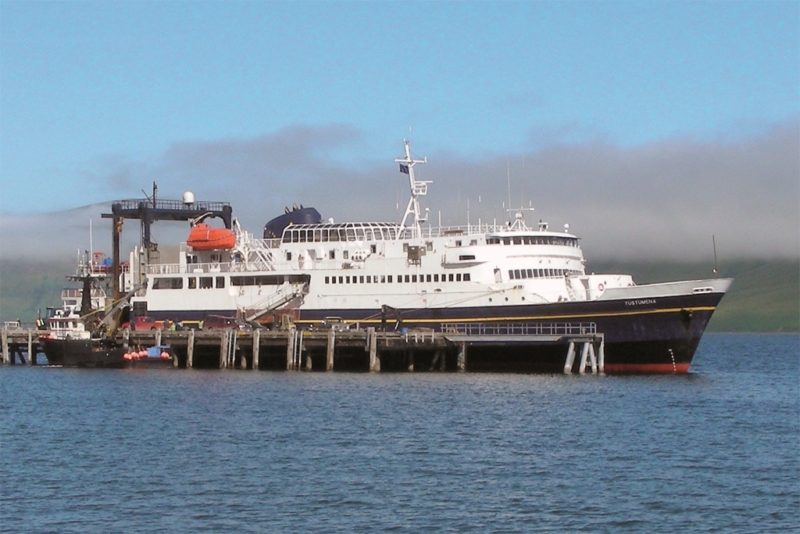
Affectionately nicknamed the ‘Trusty Tusty’ by those who travel aboard her, in recent years the nickname has morphed into the somewhat less flattering ‘Rusty Tusty’, perhaps a reflection on the fact that during the last decade she has had to miss either the whole of the summer season, or substantial parts of it on separate occasions. The main reason for this has been the corrosion and thus degradation of steelwork around the vessel which has had to be replaced, including much of the car deck itself. Also in recent years, a close eye has been kept on the number one void space at the forward end of the vessel, where cracking has occurred. However, given the hostile environment in which the ship operates, this may mostly be due to the encountering of heavy head seas. In those circumstances, even a new ship designed for the same conditions can suffer some cracking to areas around the bow if she catches or falls into a particularly bad sea, a circumstance which should be covered by the regularly mandated safety inspection for the ship.
Built by the Christie Corporation yard at Sturgeon Bay, Wisconsin (at the head of Lake Michigan),she was already falling victim to political and budgetary constraints before even leaving the stocks. Originally designed to be a 305 foot length vessel, she entered service at just 240 feet in length. Within a short time, it was realized that the Tustumena was struggling to cope with the Gulf of Alaska’s weather conditions. Her shortened length and wide beam meant that she wallowed badly in heavy seas, was difficult to handle and uncomfortable for her passengers. It was also clear that there was a pent up demand for a larger vessel, and so in 1969, she was sent south to the Bethlehem shipyard in San Francisco for lengthening by another 56 feet. At the same time, she was retrofitted with Pacific mark X fin stabilizers, and a Kamewabow-thruster designed by the Bird-Johnson Corporation. Interestingly, with the additional length of the vessel and despite the large increase in tonnage, the ship’s speed increased by over half a knot with no increase in size or output of the main engines, wholly down to the increase in water plane area caused by the lengthening exercise. The ship’s two generators however, had to be replaced because of the increased electrical loading throughout the ship.

When the Tustumena re-entered service, it was clear that her sea keeping abilities had been vastly improved, as had her manoeuvring ability, and so she became a firm favourite wherever she roamed along the coast of Alaska, which included in the summertime a scheduled 12 day run all the way out to Dutch Harbour on Unalaska Island, at the Eastern end of the Aleutian chain. Interestingly, this final group of islands was the only part of the United States and its territories which was actually invaded by Japanese forces during the Second World War, albeit occupying them for a relatively short period of time. Tustumena remains in service to this day, and the AMHS 2020 summer timetable featured her on the usual routes, since although the plans for a replacement vessel have been completed, agreement on funding had not.
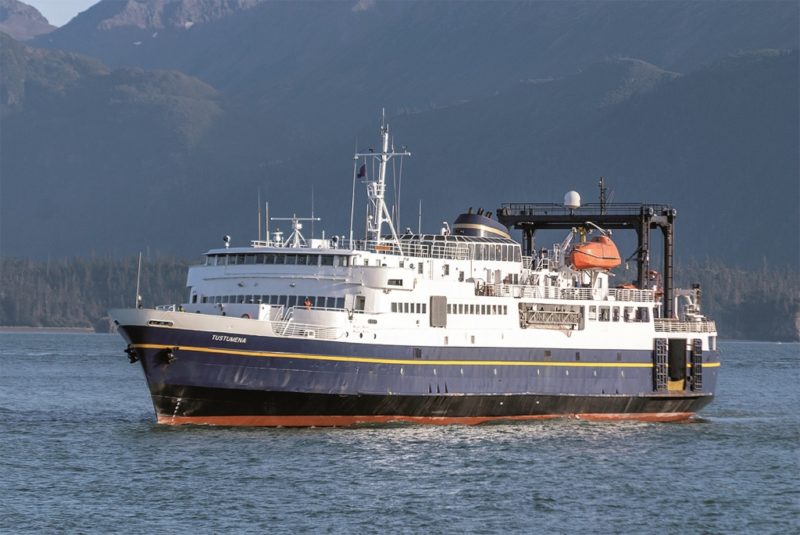
Along with her larger ocean going sister ship, she has also been home until recently to a unique band of officers and engineers, many of whom have now retired, but whose names live on due to their exploits and dedication in connecting up South Western Alaska and the Aleutian chain of Islands to the rest of Alaska and ultimately to Washington State. As the ferry network spread westwards in the 1960s, 1970s and 1980s, it was such men whose local knowledge often compensated for the lack of detailed nautical charts of the more remote areas, and proved that a ferry service could function effectively in linking up extremely remote areas. The growing network of routes and ports enhanced the lives of island residents and encouraged tourism to develop across this vast area of the Northern Pacific Ocean where it skirts the far flung Alaskan Islands. One of that group of men, Captain Jack Johnston, in his early career at sea was part of the crew of the famous ship Exodus, which attempted to bring thousands of displaced and persecuted Jews to the State of Palestine at the end of World War Two. On his retirement at the age of 80 years, and by this time a renowned Alaskan waters pilot, he was honoured by the State of Israel for his role in what became a legendary part of the story regarding the formation of that country. Along with the likes of Captain Richard Hofstad, as young officers they had built up a knowledge of the Aleutian islands and waters in the days where the only links the islanders had were by U S Mail Boats, occasional coastal tankers and cargo barges,all of which they served on board. In those not too distant days, detailed hydrographic charts of much of the chain were a rarity, and navigation of it was a skill learnt and passed down through generations of Alaskan seafarers, circumstances that prevailed until nearly the 1980s.

The motorship Kennicott (like all the other AMHS vessels, named after an Alaskan Glacier) is a relatively newer vessel, having entered service in 1998. It is indeed worth noting that of the five ‘main line’ ships, two were built in 1963, the Tustumena in 1964, and the Columbia, which is the largest ship in the fleet in 1974. In many ways, her arrival as part of the AMHS Fleet was due to the tragic events of 1989 that occurred in the Prince William Sound, when the large tanker Exxon Valdez ploughed onto Bligh Reef, and cause the second biggest oil spill in U.S. History (exceeded only by the Deepwater Horizon disaster).
In the immediate aftermath of this shocking accident, the State of Alaska in examining how best to protect its often remote waters from other similar incidents, realised that they needed to have a command and control vessel available at short notice, which could afford pollution fighting and control equipment immediately on site, with excellent communications systems, a helipad, a stowed floating dock and much other emergency equipment. At the same time AMHS was badly in need of new tonnage, and thus it seemed imminently sensible to combine the two roles, especially so when federal disaster relief funding was available for just such a vessel. The Kennicott was therefore built to fulfill both a commercial and a governmental role. She is double hulled, and has on board all that is required to be that vital command vessel in the event of another environmental disaster occurring in the area.
At 12,635 gross tons, she is much larger than the Tustumena, and has more than double the carrying capacity in both passenger and vehicle lane feet. When standing in for the Tustumena on the summer scheduled route along the Aleutian chain from Kodiak Island, despite her larger size, she is still able to service many of the remote ports, since she is also fitted with a side ramp/elevator which can cope with a 32foot tidal range.
The Kennicott was built at the Halter Marine yard at Gulfport Mississippi, and is considered the most versatile of the main line ships with her ability to cover all of the main line routes at a moment’s notice. Specifically, she was designed in part consideration of her role to replace or relieve the Tustumena, and operate in and out of difficult ports, therefore in addition to her powerful main engines which are a pair of Wartsila 32E Diesels, she also has an omni directional bow thruster, and a pair of high lift Becker rudders. Like the Tustumena, her higher build specification and equipment allows her to comply fully with the international SOLAS regulations for international voyages and sea areas such as the North Pacific.

The Alaska Marine Highway System and its fleet of ageing main line ships such as the Tustumena are now very much at a difficult point in time. Ideally, the Republican controlled state would prefer to see the ferry operations given over to the private sector. However, as has been proved elsewhere, a lack of volume of traffic usually means that private ferry operators would require substantial financial support from government in order to sustain a viable service. The quandary for the State of Alaska is clear. Do they continue to be responsible for a State owned and operated ferry system at considerable cost to the taxpayer, or do they find a way to privatise the ferry system, knowing well that state subsidies would still be required? Despite a clear mission and good branding (the fleet are well known throughout the world as ‘Alaska’s Blue Canoes’), Alaska and the United States seem a long way from accepting the North European concept of‘ road equivalent tariffs’ for ferry operations. In addition to the problems within the State of Alaska, the ‘Jones Act’ as enshrined in Federal Law means that all American flagged ships operating within United States waters must also be built and manned from within the USA, thus making the investment in further new tonnage very expensive when compared with the prices available from out with the USA. This looks to mean that the contrast between the ageing Tustumena and the relatively newer Kennicott looks set to continue for some years yet.

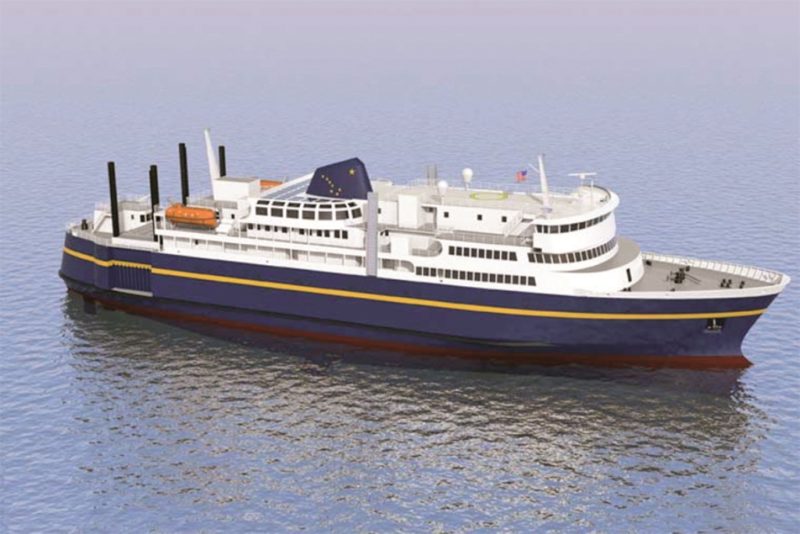
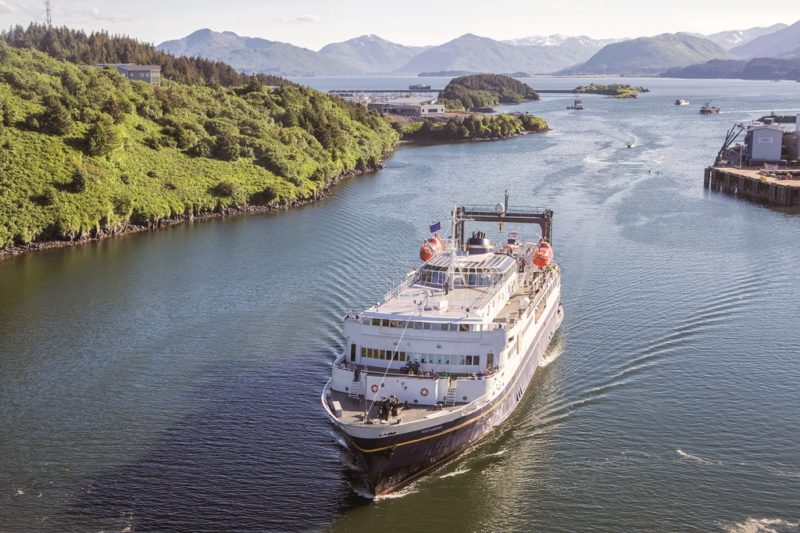
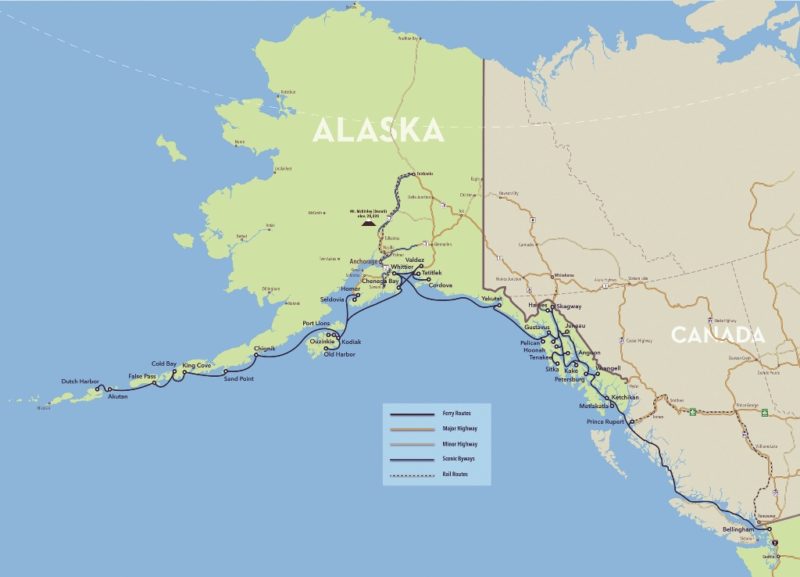
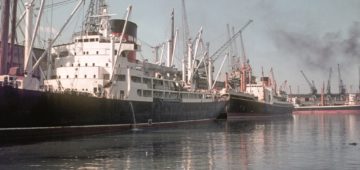



Comments
Sorry, comments are closed for this item